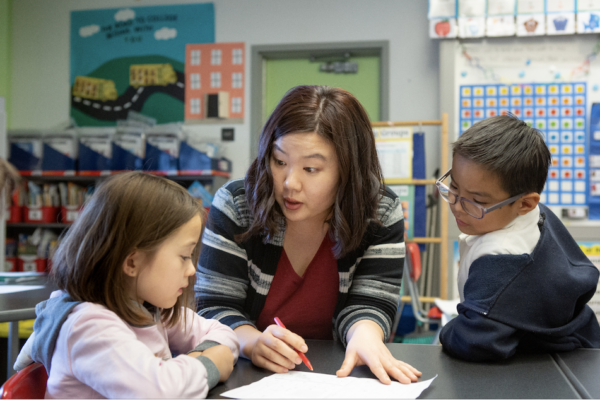I work for Transcend, a nonprofit that partners with schools and school districts on new learning models. Given our interest in innovation, when the pandemic struck we looked for schools that navigated the COVID crisis successfully, or as successfully as possible, given the extraordinary circumstances. We found that combating the loss of physical proximity with daily social connections and school culture-building activities was a linchpin of successful remote learning.
That’s consistent with a growing body of research indicating that emotional well-being drives academic success. And it’s consistent with what we’ve learned at Van Ness Elementary School in Washington, D.C.
Five years ago, we partnered with Van Ness Elementary to develop what we call a Whole Child Model, a learning environment in which students feel safe and loved and in which they can develop the socio-emotional and academic skills needed to thrive.
The school’s approach to student well-being, now in use in five other Washington schools, has three key components: a set of schoolwide supports and practices (CARE); tailored interventions for students who need more support (Boost); and a partnership with families (Family Circle).
How does this look in daily practice?
Prior to the pandemic, this meant individually welcoming students to school every morning with a student-selected greeting such as a high five or hug. Next, after arrival, children placed their daily commitments in a community jar as part of their “strong start” to the day. This morning routine was created to help students feel connected, safe and ready to learn.
Students built classroom community by noticing acts of compassion, supporting each other to work through challenging emotions, and learning how to advocate for their own needs while also taking responsibility for the class community. In between, students of all ages worked on projects together and discussed community impact.
[Read More: Teacher Mindsets: How Educators’ Perspectives Shape Student Success]
At Van Ness, all learning was centered on student well-being and these practices were integrated throughout the school day. The routines and rituals for connection, care, and community-building became all-the-more critical when school shifted online. Students and teachers continued many of their same culture-building activities but needed new routines as well. They needed a sense of safety and predictability, meaningful relationships with others, and skills to identify and cope with big emotions have been even more critical during this period.
Transcend partnered with Van Ness and the five Whole Child Collaborative schools to adapt the model for remote and hybrid settings and launched an open-source site to share the Whole Child Model with the broader public.
Whether kids were processing the country’s painful racial injustice or concerned about family members who were essential workers, Whole Child methods helped students cope.
The Whole Child Model is grounded in the belief that students must feel safe and cared for in order to learn. Some may say this is obvious, but for many students, particularly students of color, feeling cared for has not been their daily experience. And school systems are increasingly aware of the toll this past year has taken on children’s emotional well-being.
The Van Ness story underscores a greater lesson we can and must take coming out of the pandemic: students are more than just their academic outputs. As we move forward and reconsider how we build school communities in the aftermath of COVID-19, we need to recognize that the path forward must include a focus on students’ social and emotional well-being.
Jenee Henry Wood is head of learning at Transcend, a nonprofit organization.

